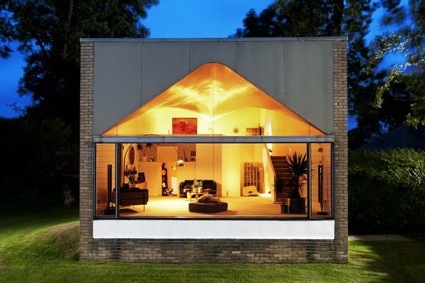 Trees, Woolsington, 1967-8 by Gordon Ryder of Ryder and Yates. Listed grade II. Photo James O Davies/English Heritage
Trees, Woolsington, 1967-8 by Gordon Ryder of Ryder and Yates. Listed grade II. Photo James O Davies/English Heritage
Brutal and Beautiful: Saving the Twentieth Century was a very small but enlightening exhibition that celebrated post-war listed architecture in England. I went to see the show one day before it closed so, for once, i have a good excuse for the ridiculously late review. It took place at the Quadriga Gallery, on the second floor of Wellington Arch right in the middle of Hyde Park Corner. I don’t think i had ever been to Hyde Park Corner before.
Brutal & Beautiful: What is Brutalism?, one of the films by Alun Bull, James O Davies and Leon Seth about twentieth century listed buildings, written and presented by architectural historian, Elain Harwood
Brutal and Beautiful, thus. The images below speak for themselves and I won’t need to comment much on the adjective ‘beautiful’, even if, for many people, their aesthetic qualities are somewhat debatable. But brutal, in this context, requires a few lines of explanation. It comes from the term New Brutalism coined by architects Alison and Peter Smithson in 1953 to define a style that used the béton brut (raw concrete) as much as it used light and innovative materials. The term probably contributed to the unpopularity of the style but in fact, what the Smithsons had in mind was not concrete aggressively poured all over the country but ‘honesty of expression and of natural materials.’ This is therefore not a show about brutalism even though the style has a strong presence in the gallery.
 Engineering Building, Leicester, 1961-1963 by Stirling and Gowan. Listed grade IIº. Photo James O Davies/English Heritage
Engineering Building, Leicester, 1961-1963 by Stirling and Gowan. Listed grade IIº. Photo James O Davies/English Heritage
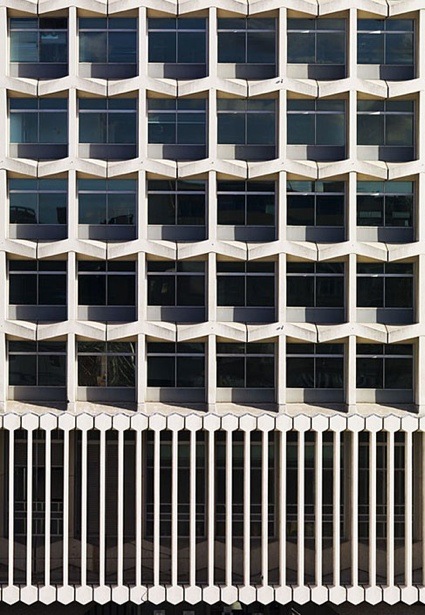 Centre Point, designed 1959-1962 by George Marsh of Richard Selfert and Partners, built in 1962-1966. Listed grade II. Photo James O Davies/English Heritage
Centre Point, designed 1959-1962 by George Marsh of Richard Selfert and Partners, built in 1962-1966. Listed grade II. Photo James O Davies/English Heritage
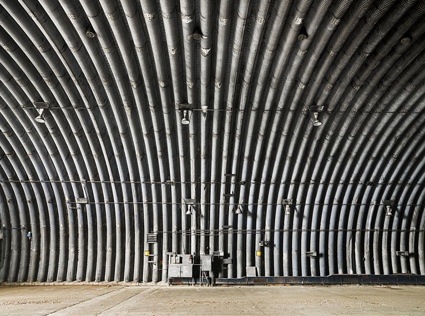 RAF Upper Heyford, 1950-1. Photo © James Davies, English Heritage
RAF Upper Heyford, 1950-1. Photo © James Davies, English Heritage
The exhibition presents brutal and beautiful cathedrals, libraries private houses, landscapes, war memorials, schools and industrial buildings. They were built between 1945 and the 1980s, in times of austerity and boldness. Each of them has been listed which means that they may not be demolished, extended, or altered without special permission from the local planning authority. Buildings and landscapes can be considered for designation once they are 30 years old. Younger structures can be protected when they are under severe threat or are considered outstanding, that’s how the Lloyd’s building became the youngest listed edifice. And ultimately, the exhibition invites us to rethink what makes a historic building:
Now the Royal Festival Hall and Coventry Cathedral are popularly admired but at the time post-war listings were fiercely debated and the future Tate Modern was rejected. Brutal & Beautiful looks at our love/hate relationship with England’s recent architectural past and asks ‘what is worth saving?’
It’s fascinating to see how buildings that have been much maligned are now seen as iconic. Think of the Trellick Tower –and the smaller but equally arresting Balfron Tower— by Ernö Goldfinger, an architect as famous for his arresting council blocks as he is for his unpleasant character so much so that, as you probably know already, Ian Fleming named one of James Bond’s villains after him.
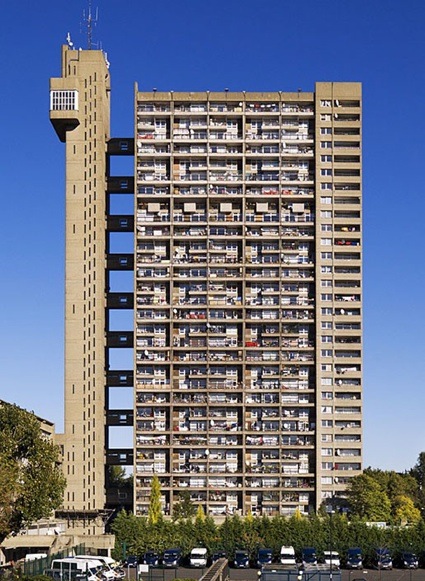 Trellick Tower, Cheltenham Estate, Kensington, 1968-1972 by Ernö Golfinger. Listed grade IIº
Trellick Tower, Cheltenham Estate, Kensington, 1968-1972 by Ernö Golfinger. Listed grade IIº
The Barbi! The upswept balconies, i read in the gallery, reduce wind resistance.
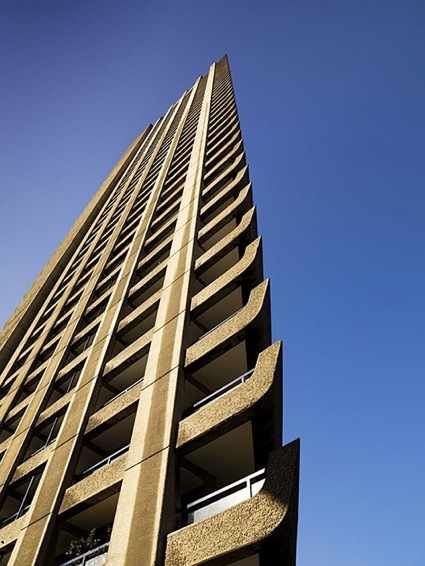 Cromwell Tower, Barbican, City of London, 1964-1973 by Chamberlin, Powell and Bon. Listed grade II. Photo James O Davies/English Heritage
Cromwell Tower, Barbican, City of London, 1964-1973 by Chamberlin, Powell and Bon. Listed grade II. Photo James O Davies/English Heritage
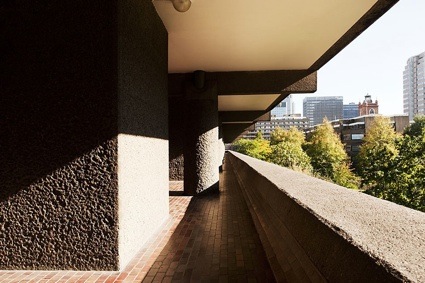 Photo James O Davies/English Heritage
Photo James O Davies/English Heritage
That said, all’s not rosy and cheerful in the world of Brutalism. The Heygate Estate, in Elephant & Castle, provided the gloomy setting for violent scenes in the Luther tv series until its demolition started and John Madin’s Birmingham Central Library will be teared down in 2014. But, hey, at least the the Preston Bus Station is doing ok.
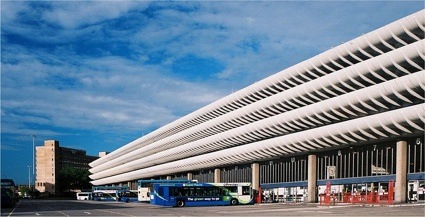 The Preston Bus Station, 1968-1969 by Keith Ingham and Charles Wilson of Building Design Partnership with E. H. Stazicker. Photo Dr Greg via wikipedia
The Preston Bus Station, 1968-1969 by Keith Ingham and Charles Wilson of Building Design Partnership with E. H. Stazicker. Photo Dr Greg via wikipedia
And i’m going to leave you here with some brutal and not so brutal archi porn:
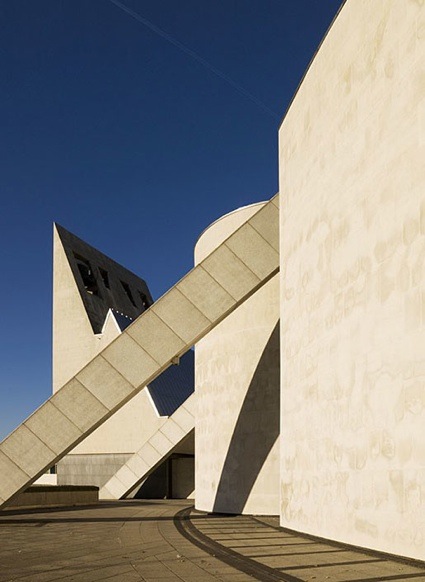 Photo © James Davies, English Heritage
Photo © James Davies, English Heritage
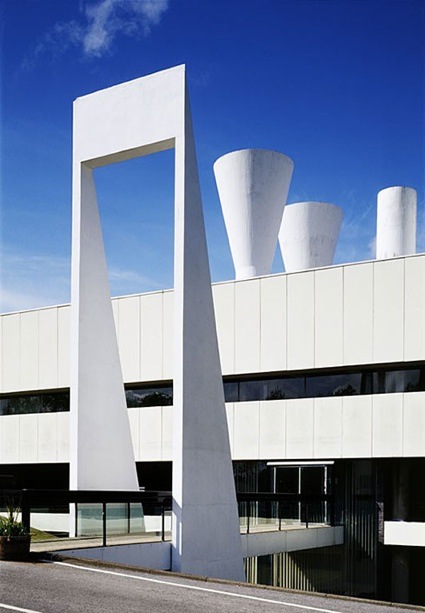 British Gas Engineering Research Station, Killingworth, 1966-7. Designed by architect Peter Yates of Ryder & Yates. Listed Grade IIº. Photo © James Davies, English Heritage
British Gas Engineering Research Station, Killingworth, 1966-7. Designed by architect Peter Yates of Ryder & Yates. Listed Grade IIº. Photo © James Davies, English Heritage
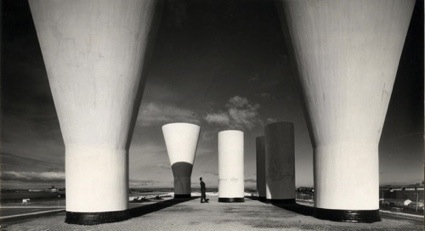 British Gas Engineering Research Station, Killingworth, 1966-7. Designed by architect Peter Yates of Ryder & Yates. Listed Grade IIº
British Gas Engineering Research Station, Killingworth, 1966-7. Designed by architect Peter Yates of Ryder & Yates. Listed Grade IIº
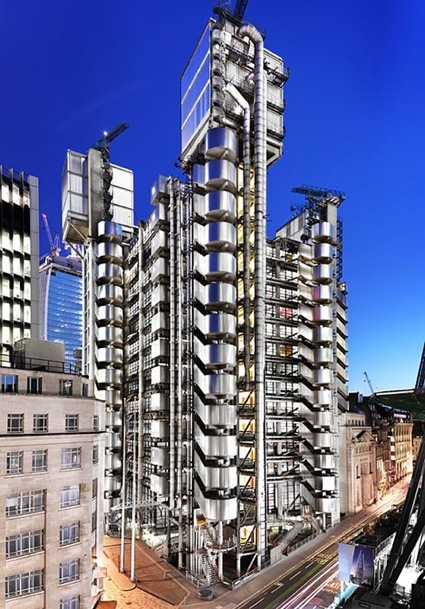 Lloyd’s Building, City of London, 1981-1986 by Richard Rogers and Partners. Listed Grade I. Photo © James Davies, English Heritage
Lloyd’s Building, City of London, 1981-1986 by Richard Rogers and Partners. Listed Grade I. Photo © James Davies, English Heritage
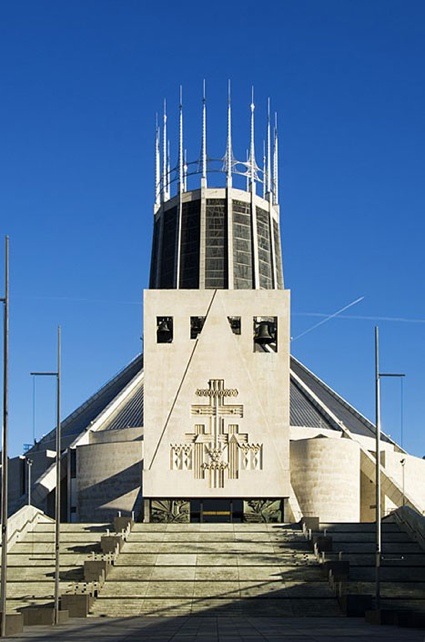 Metropolitan Cathedral of Christ the King, Liverpool, 1962-7 by Frederick Gibbero and Partners. Listed grade IIº
Metropolitan Cathedral of Christ the King, Liverpool, 1962-7 by Frederick Gibbero and Partners. Listed grade IIº
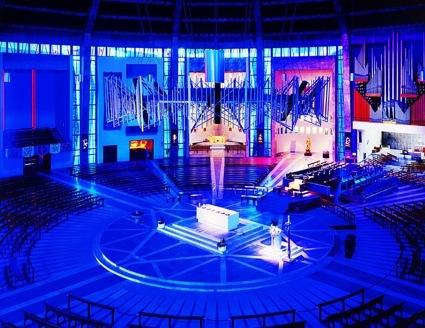 Metropolitan Cathedral of Christ the King, Liverpool, 1962-7 by Frederick Gibbero and Partners. Listed grade IIº
Metropolitan Cathedral of Christ the King, Liverpool, 1962-7 by Frederick Gibbero and Partners. Listed grade IIº
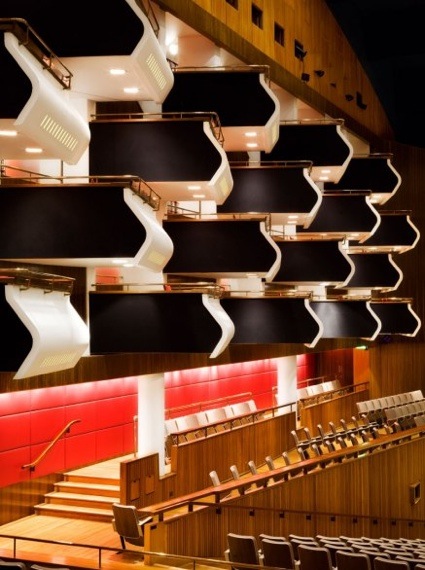 The Royal Festival Hall, London, 1949-51 by the London County Council. Listed grade I. Photo: James O Davies/English Heritage
The Royal Festival Hall, London, 1949-51 by the London County Council. Listed grade I. Photo: James O Davies/English Heritage
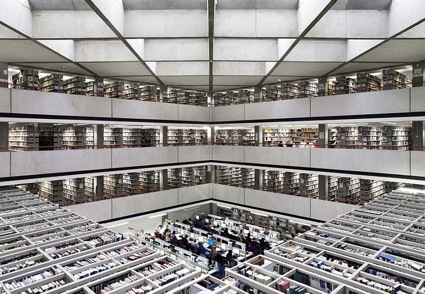 Library (Phillips Building) to the School of Oriental and African Studies, 1964-1974 by Denys Lasdun and Partners. Listed grade IIº. Photo James O Davies/English Heritage
Library (Phillips Building) to the School of Oriental and African Studies, 1964-1974 by Denys Lasdun and Partners. Listed grade IIº. Photo James O Davies/English Heritage
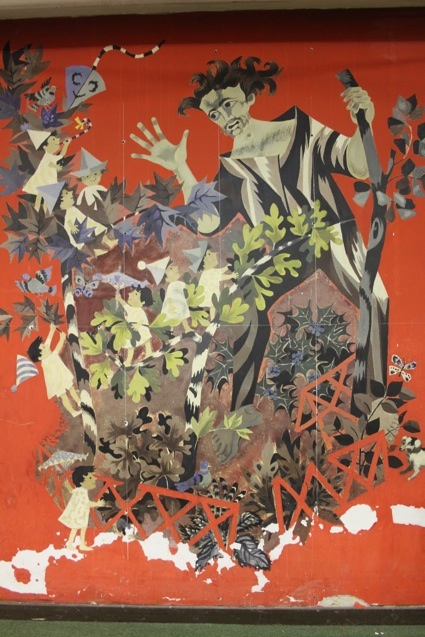 Templewood School, Welwyn Garden City, Hertfordshire County Council, 1949-1950. Job Architect A.W. Cleeve Barr. Listed Grade IIº. Photo via The Decorated School
Templewood School, Welwyn Garden City, Hertfordshire County Council, 1949-1950. Job Architect A.W. Cleeve Barr. Listed Grade IIº. Photo via The Decorated School
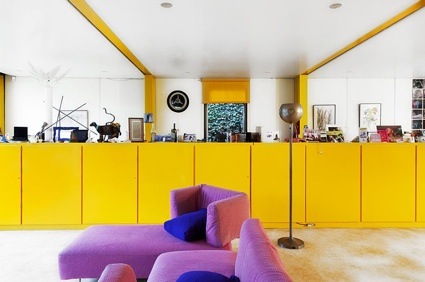 Rogers House, Wimbledon, City of London, 1981-86 by Richard Rogers and Partners. Listed grade I
Rogers House, Wimbledon, City of London, 1981-86 by Richard Rogers and Partners. Listed grade I
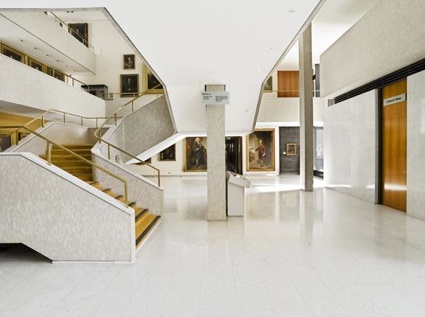 Royal College of Physicians, Regent’s Park, London, 1960-4 by Denys Lasdun and Partners. Photo: James O Davies/English Heritage
Royal College of Physicians, Regent’s Park, London, 1960-4 by Denys Lasdun and Partners. Photo: James O Davies/English Heritage
Brutal & Beautiful: The Royal College of Physicians, Regent’s Park, London, designed by Sir Denys Lasdun. One of the films about twentieth century listed buildings, written and presented by architectural historian, Elain Harwood and screened at the exhibition Brutal and Beautiful
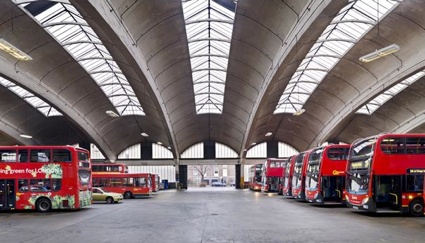 Stockwell Bus Depot, 1951-3 by Adie, Button and Partners. Listed grade IIº. Photo: James O Davies/English Heritage
Stockwell Bus Depot, 1951-3 by Adie, Button and Partners. Listed grade IIº. Photo: James O Davies/English Heritage
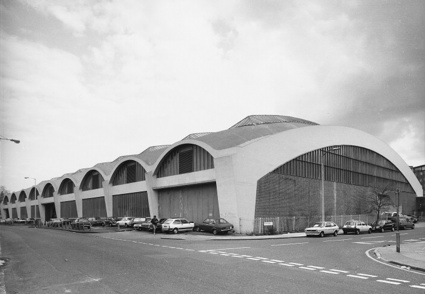 Stockwell Bus Depot, 1951-3 by Adie, Button and Partners. Listed grade IIº. Photo Courtauld Institute of Art
Stockwell Bus Depot, 1951-3 by Adie, Button and Partners. Listed grade IIº. Photo Courtauld Institute of Art
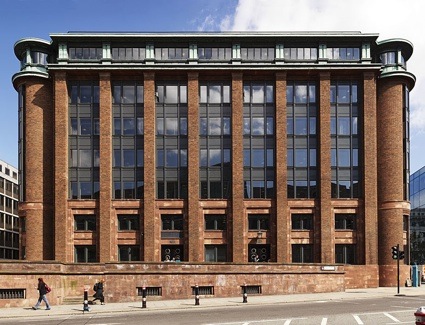 Bracken House, City of London, 1955-9 by Albert Richardson for the Financial Times. Listed grade IIº
Bracken House, City of London, 1955-9 by Albert Richardson for the Financial Times. Listed grade IIº
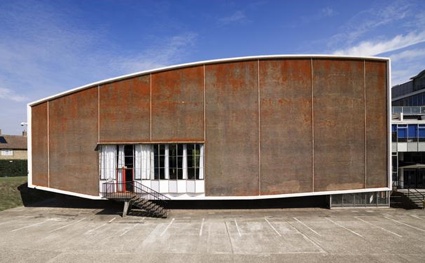 Elliott School, Putney, 1953-6, by London County Council. Photo: James O Davies/English Heritage
Elliott School, Putney, 1953-6, by London County Council. Photo: James O Davies/English Heritage
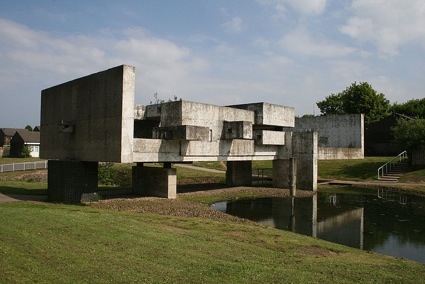 Apollo Pavilion at Peterlee in County Durham, 1963-1970 by Victor Pasmore. Listed grade II*. Photo James / cacophonyx
Apollo Pavilion at Peterlee in County Durham, 1963-1970 by Victor Pasmore. Listed grade II*. Photo James / cacophonyx
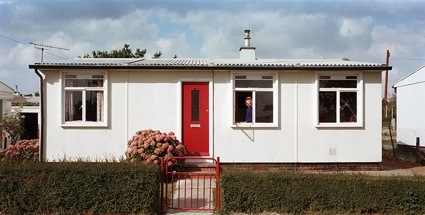 B2 Prefab, 55 The Crapen, Cashes Green, Stroud, 1948
B2 Prefab, 55 The Crapen, Cashes Green, Stroud, 1948
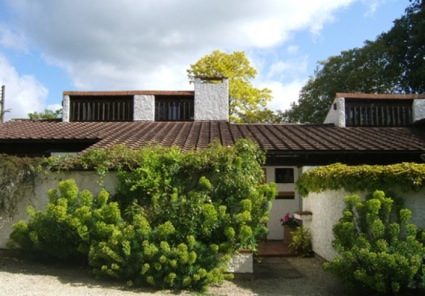 Turn End, Buckinghamshire, built in 1967 by Peter Aldington. Photo James O Davies/English Heritage
Turn End, Buckinghamshire, built in 1967 by Peter Aldington. Photo James O Davies/English Heritage
Brutal & Beautiful: Peter Aldington and Turn End. Shot by photographers and filmmakers Alun Bull and James O Davies and screened at the exhibition Brutal and Beautiful
The photographs in the exhibition were by James O. Davies. They will appear in a forthcoming book, Space, Hope and Brutalism: English Architecture 1945-1975 which will be published next year by Yale University Press. I’ll definitely get my hands on that one.
Related: Utopia London.
Brutal and Beautiful: Saving the Twentieth Century is thus closed. The next exhibition to open at the Quadriga Gallery, however, seems to be equally interesting: Almost Lost: London’s Buildings Loved and Loathed. It will run from 4 December to 2 February 2014.
